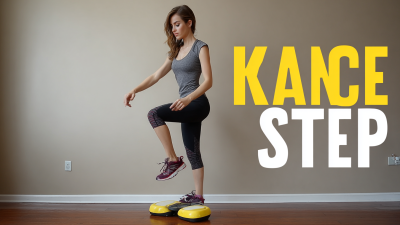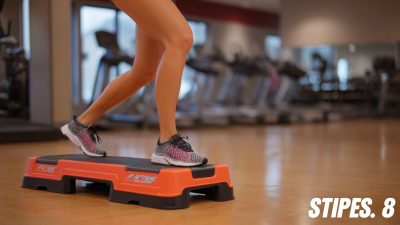Unlock Fitness Potential: The Science Behind Total Body Workout Weighted Bars for All Levels
In recent years, the fitness industry has seen a significant shift towards more inclusive and versatile workout solutions, with tools like the Total Body Workout Weighted Bar gaining popularity among fitness enthusiasts of all levels. According to a report by the International Health, Racquet & Sportsclub Association (IHRSA), over 20% of gym-goers are now incorporating multi-functional training equipment into their routines, reflecting a growing preference for efficiency in workout regimens. The Total Body Workout Weighted Bar stands out as an ideal option, as it engages multiple muscle groups simultaneously, promoting strength, stability, and endurance. Research published in the Journal of Sports Science indicates that total body workouts can lead to a substantial boost in metabolic rate, making them a time-efficient choice for modern exercisers.

As we delve into the science behind this versatile fitness tool, we will explore its benefits, proper techniques, and tips for all fitness levels to unlock their true fitness potential.
Understanding Total Body Workouts: Benefits of Weighted Bars for All Fitness Levels
Total body workouts have gained immense popularity due to their efficiency in enhancing overall fitness levels. Weighted bars are particularly beneficial as they add resistance, making exercises more challenging and effective for everyone, regardless of their fitness journey. Incorporating weighted bars into your routines can boost strength, improve coordination, and promote muscle endurance, all of which are crucial for a well-rounded fitness regimen.
Tips for using weighted bars include starting with a manageable weight to understand your limits and gradually increasing as your strength builds. Ensure you maintain proper form throughout your exercises to prevent injury and maximize benefits. Beginners can focus on basic moves such as squats or overhead presses with the bar to establish a solid foundation.
As you progress, consider diversifying your workout by integrating dynamic movements like lunges or twists to engage different muscle groups. Remember to listen to your body and take ample recovery time between sessions to allow muscles to repair, ensuring sustainable growth and improved performance. With consistent practice, weighted bars can unlock your fitness potential and elevate your workouts to new heights.

Selecting the Right Weighted Bar: Key Considerations for Beginners and Experts
When selecting the right weighted bar for your total body workout, several key considerations can help maximize effectiveness and safety. For beginners, it’s essential to start with a lighter weight to focus on form and technique. Research from the American Council on Exercise indicates that improper lifting techniques can lead to injury, emphasizing the need for adequate weight that allows for proper execution of movements. A bar weighing between 5 to 10 pounds is often recommended for newcomers, gradually increasing as they build strength and confidence.
For more experienced fitness enthusiasts, the selection process involves knowing your specific training goals. According to a study by the National Strength and Conditioning Association, incorporating progressive overload with weighted bars can enhance muscle hypertrophy and endurance. Users should consider bars that can accommodate adjustable weights, allowing for versatile training sessions that transition from strength training to cardio-intensive workouts. Furthermore, paying attention to the grip and material of the weighted bar can significantly affect performance, as ergonomically designed grips reduce fatigue and enhance control during various exercises.
Essential Techniques: How to Properly Use Weighted Bars for Maximum Effectiveness
When utilizing weighted bars in your workout routine, proper technique is crucial for maximizing effectiveness and minimizing the risk of injury. Begin by ensuring you have the correct grip: your hands should be evenly spaced on the bar for balanced control. As you lift, engage your core to stabilize your body and provide additional strength to your movements. This engagement not only enhances the efficiency of the workout but also protects your back during exercises like squats or presses.
Incorporating varied movements with weighted bars can elevate your routine. Exercises such as lunges, deadlifts, and overhead presses target multiple muscle groups, promoting overall body strength. Focus on controlled movements rather than speed—this helps maintain proper form and maximizes the benefits of resistance training. Aim for a full range of motion, ensuring that each rep is performed with intention. Regularly adjusting the weight and experimenting with different exercises keeps your workouts challenging and effective for all fitness levels, making weighted bars a versatile addition to any fitness program.

Sample Total Body Workout Routines Using Weighted Bars for Various Skill Levels
Weighted bars are becoming increasingly popular for those looking to enhance their total body workouts across various fitness levels. According to a report from the American Council on Exercise, incorporating weighted objects can improve strength gains by up to 20% more than bodyweight exercises alone. This makes weighted bars an excellent choice for beginners to experts alike, as they can easily adjust the load to match their current capabilities.
For beginners, a simple routine can include exercises such as squats and overhead presses with a light-weighted bar, focusing on proper form and technique. As individuals progress, they can elevate their workout by incorporating more complex movements like lunges and deadlifts with heavier bars. Research published in the Journal of Strength and Conditioning Research indicates that progressive overload, which can be easily achieved with weighted bars, is crucial for continued muscle growth and strength improvement. Therefore, utilizing a weighted bar not only allows for a scalable workout but also maximizes efficiency in training, making it an ideal tool for anyone determined to unlock their fitness potential.
Tracking Progress: Measuring Fitness Improvements with Weighted Bar Workouts
Tracking your fitness progress is essential, especially when incorporating total body workouts with weighted bars. Research from the American Council on Exercise suggests that individuals who consistently measure their fitness improvements are 30% more likely to stick to their workout regimens. Weighted bar workouts enhance not only strength but also endurance, agility, and balance, making them a versatile choice for all fitness levels. By tracking metrics such as repetitions, sets, and overall endurance over time, individuals can clearly see their progression, which serves as motivation to push harder in their training.
To maximize your results with weighted bar workouts, consider keeping a workout journal to log your progress. Noting the weight used, the number of reps completed, and how you felt during each session can provide invaluable insights into your improvement over time. Additionally, switching up routines every four to six weeks can prevent plateaus and promote continuous gains.
Always remember to listen to your body and adjust weights as needed. Aim to gradually increase the resistance as you become stronger, aiming for a safe and sustainable increase of 5% to 10% in weight. Consistency, combined with tracking your progress, will unlock your true fitness potential with weighted bar workouts.
Tracking Fitness Improvements with Weighted Bar Workouts
This chart illustrates the progress in strength and endurance over a six-week period for individuals utilizing total body workout weighted bars. The data reflects measurable improvements, showcasing how consistency and dedication towards a structured workout regimen can yield significant benefits at all fitness levels.
Related Posts
-

Issues with Best Balance From Aerobic Step That You Should Be Aware Of
-

8 Reasons Why the Best Fitness Aerobic Step Platform Outshines the Competition
-

Ultimate Guide to Choosing the Best Workout Aerobic Stepper for Maximum Fitness Results
-

7 Essential Tips for Perfecting Your Workout with an Adjustable Exercise Step
-

How to Maximize Your Workout with a Multi Function Pedal
-

The Ultimate Guide to Maximizing Your Workout with the Aerobic Adjustable Stepper: Benefits, Techniques, and Data Insights
